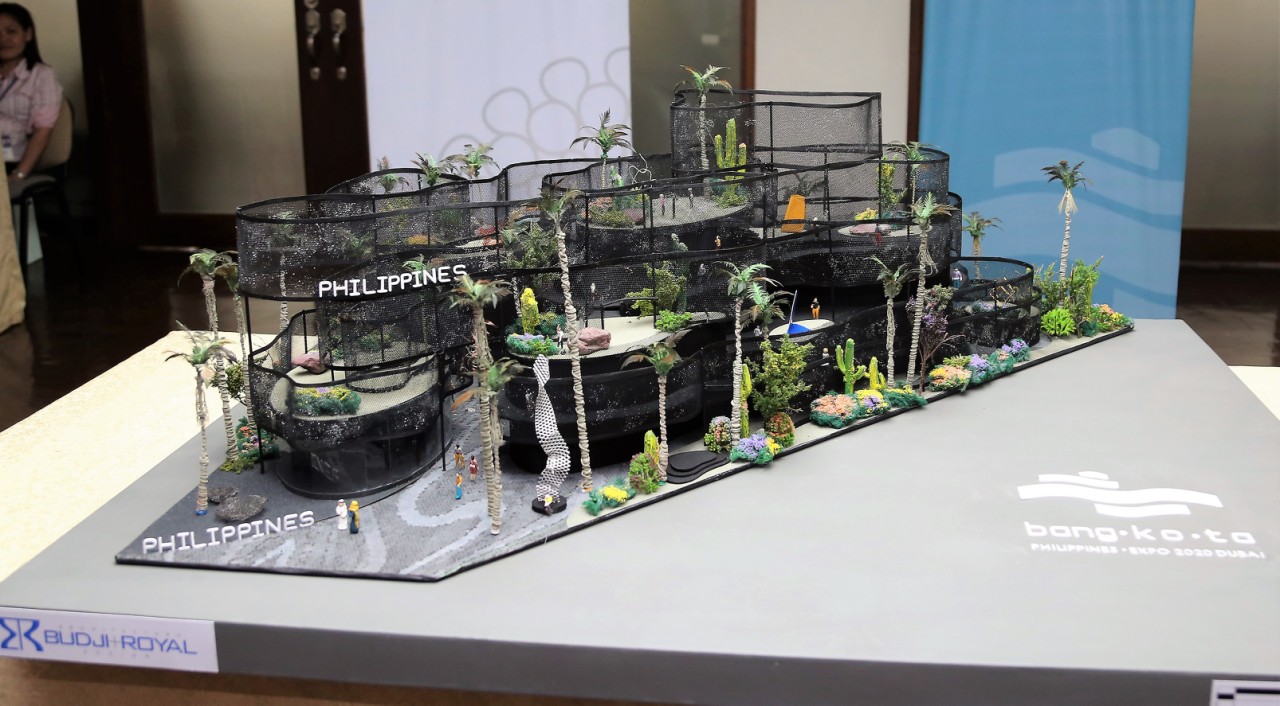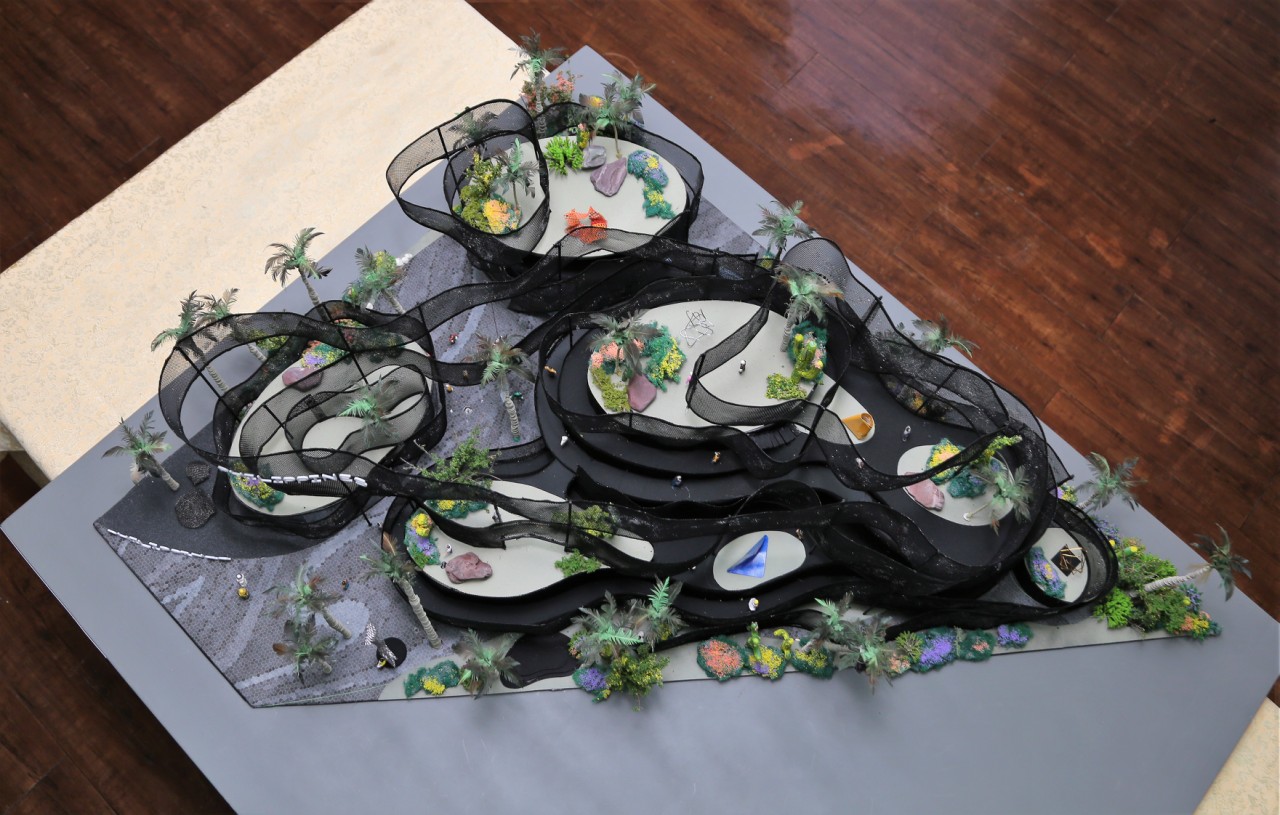
The theme highlights not only the country’s natural resources, but the similarities between the coral reef and Filipinos, as both grow into colonies that thrive throughout the world.
By Alex Y. Vergara
Are you ready for Dubai 2020? Twenty years into the new millennium, how has the country progressed as it continues to chart its future? But how important is it to be rooted and aware of one’s past before one begins to step into the unknown? Part of the answer can be found next year, as the Philippines puts its best foot forward, as it joins and engages with the rest of the world in one of the biggest gatherings of its kind in recent memory.
The Department of Trade and Industry (DTI) recently hosted a select group of lifestyle journalists in a round table lunch for a sneak preview of the Philippines’ participation at Expo 2020 Dubai. The DTI revealed “Bangkóta,” the ancient Tagalog word for coral reef, as the theme of the Philippines’ participation at next year’s Expo, which runs from October 2020 to April 2021.
According to a press statement provided by DTI, the theme highlights not only the country’s natural resources, but the similarities between the coral reef and Filipinos: both grow into colonies that thrive throughout the world. Expo 2020 Dubai is the latest edition of the World Expo that started in London in 1851. Dubai’s 428-hectare Expo will feature pavilions from 190 participating countries. Close to 25 million tourists are expected to visit the Expo during its entire seven-month run.

The Philippine pavilion will be a 3,000 square-meter space with a 1,300 square-meter enclosed area, designed by Budji+Royal Architecture+Design and curated by Marian Roces. It will feature five exhibits, an artisanal café, and Go Lokal! Stores, the statement added. After the Expo, the exhibit will be installed permanently in New Clark City.
“Our most important goal in participating at the Expo is to present a country brand that reflects our rich history and our values as caring, compassionate, and creative people,” said DTI Secretary Ramon Lopez.
Apart from the goodwill the Philippine participation is bound to generate, Lopez acknowledged the “pride and joy” a beautiful and well-designed pavilion would bring to countless Filipinos in the Middle East and elsewhere who plan to go out of their way and visit the Expo. The “strong” Philippine participation is also in response to the United Arab Emirates’ (UAE) recognition of the “immense” role Filipinos play in helping UAE’s economy thrive as well as their technical contributions.
“We wanted a smaller space because of budget (considerations),” said Lopez, in reference to the country’s practice of leasing spaces in the past that don’t exceed 500 square meters. This time, the UAE convinced the Philippine government to get a 3,000-square meter space.
Although the Expo is not a trade fair, Lopez, in the same press statement, said that the government’s budget of just under P1 billion will be earned back through tourism, trade, services and investments, as the DTI will also organize an investment mission to maximize the opportunity.
He added that the interest to join the Expo came from President Duterte because there are around 700,000 Filipinos in the UAE. The President has since issued Administrative Order 17 assigning DTI to lead the Philippine Organizing Committee (POC) for Expo 2020 Dubai. The POC is also composed of the Departments of Tourism, Foreign Affairs, Budget, Labor, Science and Technology, and Information and Communications Technology.
Honest yet progressive design
DTI Assistant Secretary Rosvi Gaetos shared that Expo 2020 Dubai organizers thought that the PH pavilion is “humble, honest, yet progressive.”
Architect Royal Pineda of Budji+Royal Architecture+Design said they used mesh instead of concrete as the primary material, as a way to present “ourselves truthfully, rather than compete with other countries.”
The design’s essence is about the “modern Pinoy sensibility,” said Pineda. “The event is a big show on technology as well as luxury. We felt we had to present something authentic to us despite us not being a first world country.”
And they plan to do that by presenting nature or, to be more precise, a representation of the country’s rich and unparalleled marine biodiversity. The key, Pineda added, isn’t to compete with other countries with regards to whose pavilion is bigger, grander and more expensive. Even we stand a chance on these fronts, it doesn’t make sense if we veer away to who we are as a country and as a people. Nature, he said, “is peace.” And man is part of nature.
“There’s too much variety in the world,” Pineda said. “We believe that every person as well as every nation has its own individual identity. The key is not to compete with others, but to be truthful, genuine and humble instead, but very progressive in one’s thinking. We’re not inferiors to anyone, but at the same time it’s not about bragging while presenting ourselves. What we’re presenting is something we can all enjoy as Filipinos, what we can offer to the rest of the world.”
Ready for a reset
Curator Marian Roces curated five main exhibits, namely “4,000 Years Young,” “Modern Becomes Filipino,” “The Muslims of the Philippines,” “The Coraline People” and “Oceans Pacific,” to illustrate the country’s history even before the arrival of the Spaniards. The exhibits endeavor to change the world’s mindset about the Philippines and the Filipinos’ mindset about themselves.
“Instead of marble, we’re using humble materials that speak of authenticity,” said Roces. “These are materials that are available to us. Nature and culture collapse into each other.”
The pavilion will have three main pillars that reflect the Bangkota theme: sustainability, connecting minds and creating the future. The middle part connects propositions.
The general theme is connectivity and sustainability, said Roces. It’s worth repeating that Filipinos are one of the most if not the most “connected” people in the world. But like every art form, that story needs to be told in an “enchanting’ way. The display is also all about reverse images and disorienting experiences. Although there are five exhibits, their arrangement isn’t linear. Instead the five spaces are overlapping.
In line with this, the POC chose March 16, 2021 as the Philippine National Day to commemorate the 500th anniversary of Ferdinand Magellan’s arrival in the Philippines. The celebration aims to shift the mindset of this being the day that Magellan discovered the Philippines, to the day we discovered Magellan.





